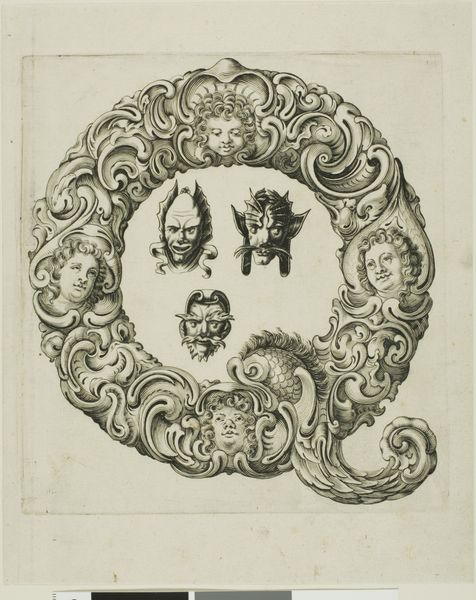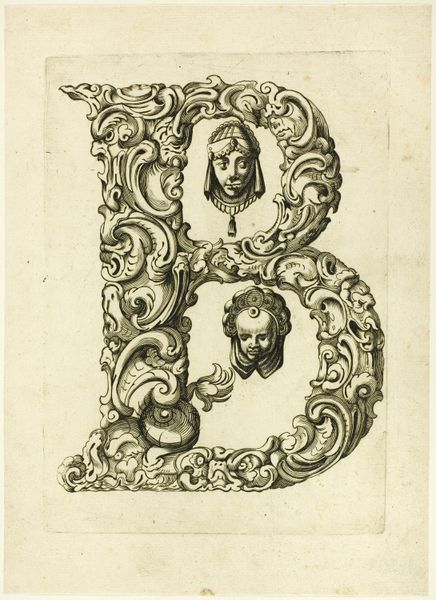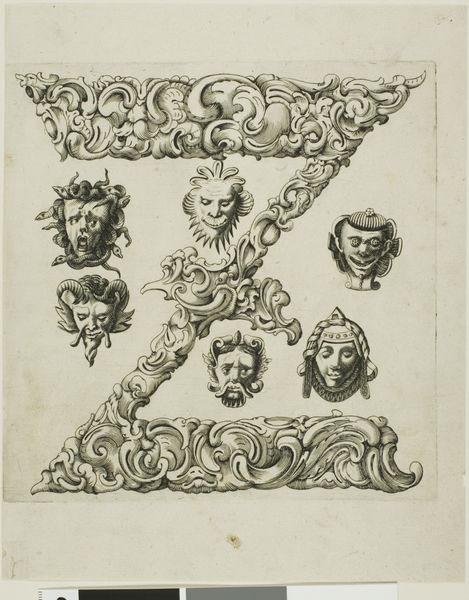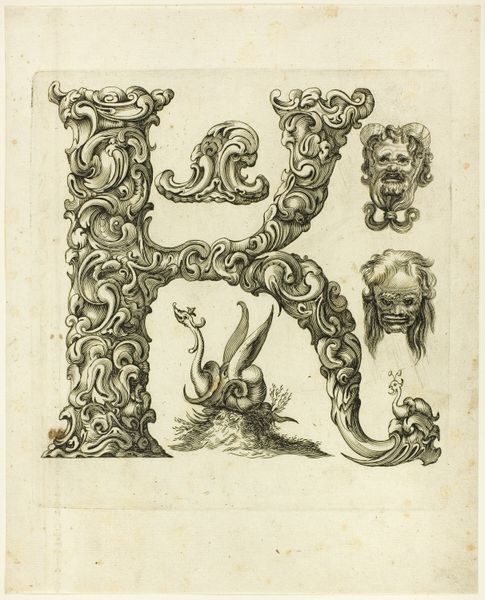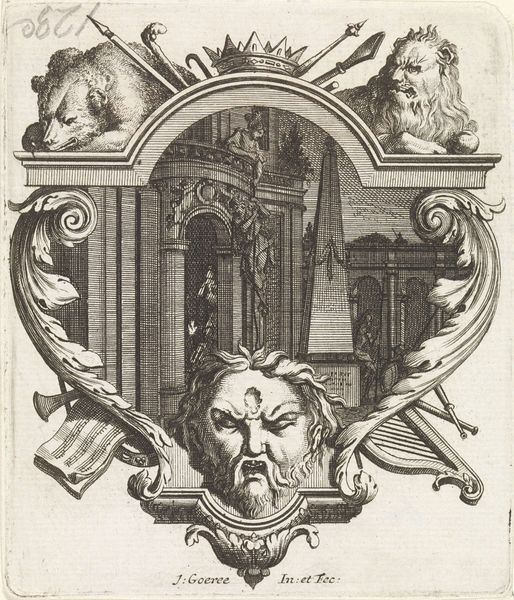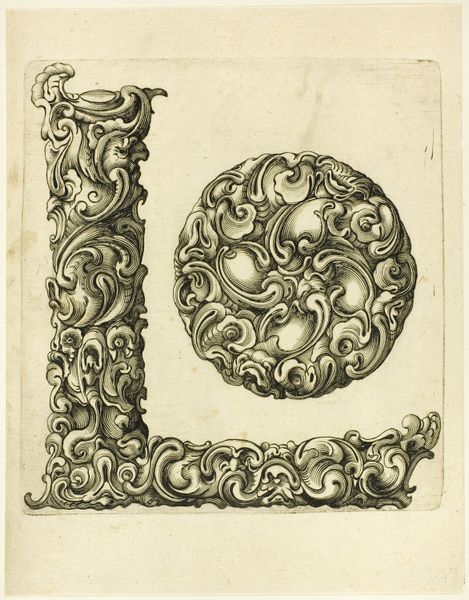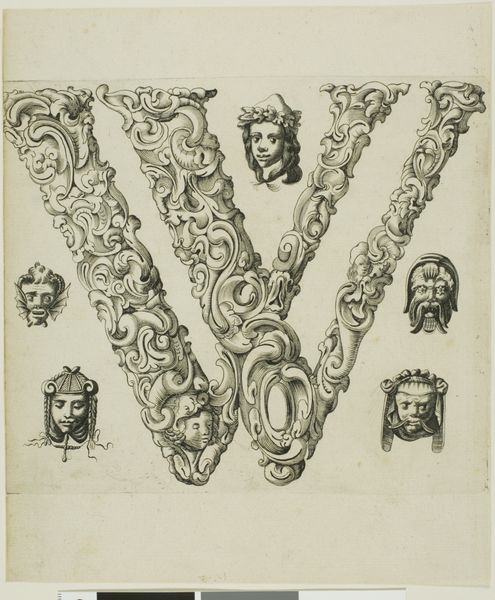
drawing, print, paper, engraving
#
drawing
#
baroque
# print
#
pen sketch
#
paper
#
form
#
geometric
#
line
#
engraving
Dimensions: 217 × 177 mm
Copyright: Public Domain
Editor: Here we have "Letter G," an engraving by Peter Aubry, dating back to 1630. The intricacy of the line work is astonishing! It’s hard to believe this was done entirely by hand. I find it incredibly ornate, and almost a little unsettling with those disembodied faces. How do you interpret this work, considering its visual elements? Curator: I am drawn to the masterful application of line. Notice how the varying densities and orientations of the engraved lines create a palpable sense of volume and texture within the scrolling foliate forms. The precision invites closer scrutiny, compelling us to decode the visual structure. Is the apparent unsettling quality perhaps a product of the baroque aesthetic—the period’s predilection for dynamic compositions and dramatic chiaroscuro effects rendered here by light and dark engraving? Editor: That’s a helpful point. It's true that without the sharp contrast, the form would seem far less animated. I suppose I find it a little strange, still, how the faces disrupt the natural flow and continuity of the design, not seeming to emerge organically like the leafy elements. Curator: Perhaps the disruption is deliberate. Think of the relationship between those miniature masks and the overriding 'G' shape, one geometric, one more human. Consider that their arrangement and the gaze directs the eye. Are we meant to contemplate the role of form and surface? Editor: So you're saying it might be more about the contrast between the organic forms and geometric structure of the "G"? Looking at the detail, there's a clear emphasis on line quality and creating volume with it. I never considered it that way. Curator: Precisely! By understanding the elements used in the work, a deeper meaning is unveiled from its artistry.
Comments
No comments
Be the first to comment and join the conversation on the ultimate creative platform.
